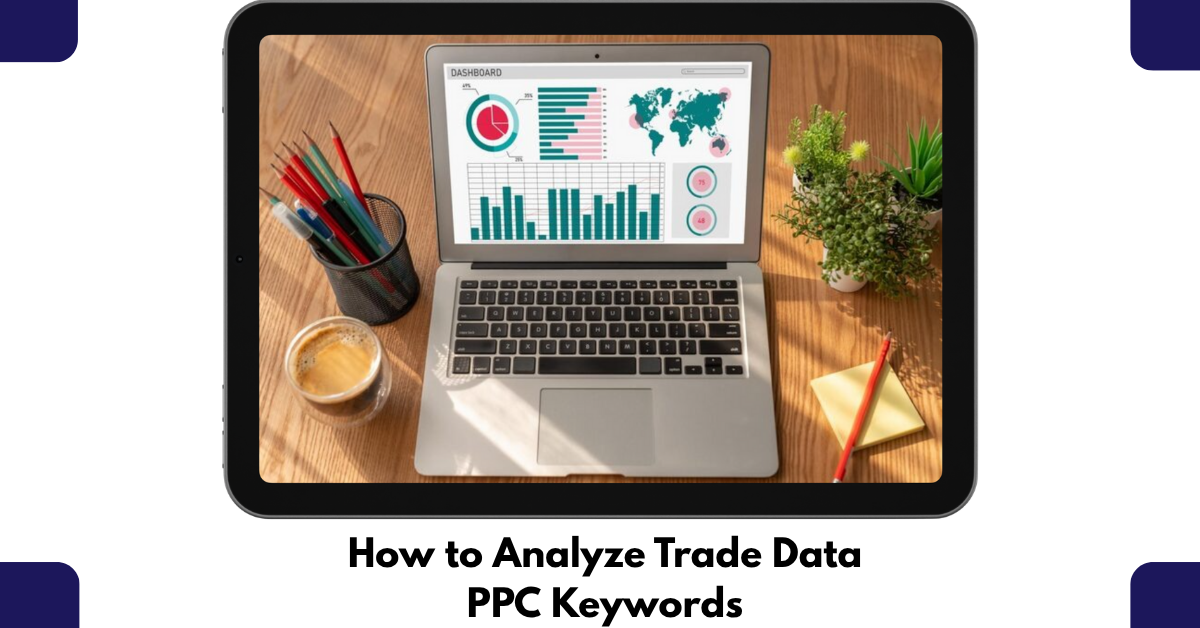Unlocking the Power Behind PPC Strategy
In a PPC campaign, money is not a resource to be squandered. Instead, every click, every search, and every word in a keyword is treated as a possible pathway to grow and develop. But in an ideal world, marketers would be baffled. There exists a sustainable long-term PPC strategy that aims to analyze the complexities trade data PPC keywords stems from. Creating ads is one thing; understanding the searcher’s psychology, the industry’s practices, and the details that matter to ensure a phrase converts is a different story altogether.
Why Keywords Define the Battlefield
The world of digital advertising is one of the most competitive domains one could ever engage in. Thousands and thousands of businesses battle every day to garner the attention to their users. However, the power is not necessarily in the attention-grabbing ads created and the money consumed. Rather, the power lies in understanding and utilizing the right keywords contextually and paid ads PPC. Without the context, campaigns lose an exorbitant amount of money and the business suffers. trade data PPC keywords
Review the trade data PPC keywords list provided. Neither is this list an ever-fixed collection of terms. It is an ever-evolving representation of industries, buyers, and competitors. A single missed keyword could mean the difference between winning a profitable customer and allowing them to be won by a rival. And this list, when properly processed, is invaluable for gleaning insights.
Breaking Down the Science of trade data PPC keywords
Understanding What Drives Keyword Value
Not all keywords carry the same weight. The keywords that attract many impressions, but cannot convert, are the lowest in value. The few keywords that are considered valuable, carry a high CPC charge, and are scarce, are the rarest of gems in the keyword market. These keywords are highly sought after, and their phrases often remain buried in trade data, waiting for the right marketer to find them.
When companies look for trade data PPC keywords examples, they do not simply look at the volume of searches. They analyze the underlying intentions of the user, the business cycle by sector, and geography. This data paints a picture of what buyers want, when they want it, and how much they are willing to invest.
The Role of Tools in Accurate Analysis
Using the software toold for PPC keywords for your paid ads campaigns is priceless. Tools like the Audience Insights tool of Google offer search volume, level of competition, and even CPC estimates. Using only one tool, though, for analysis and planning can result in blind spots. Marketers spend hours seeking for different sources of data to enrich their search like adding trade data to keyword planner results to analyze the whole opportunity and risk landscape. trade data PPC keywords
Decoding Keyword Intent
What is the keyword analysis about? In other words, what is the keyword intent? Every search line is motivated by something, and searching online is no exception. Is the user seeking for an answer, wanting to do a comparison, or is already wanting to buy? For instance:
“Why is a CRM important” is for the sender’s brand awareness.
“Where can I buy a CRM software” is for the sender’s a revenue generating activity.
“Best CRM software comparison” is for the sender’s brand strength.
Each campaign intent is guaranteed maximum results. In other words, every campaign is appropriately set up to the dollar to achieve the maximum revenue spend given.
Why Analyzing Trade Data PPC Keywords Matters
Unlocking Growth Opportunities
The purpose of doing trade keyword research in PPC advertising is almost underrated. In paid advertising, this is even more critical. Doing SEO takes a relatively longer time for the visibility to reflect, but PPC is instant. Incorporating trade data into PPC analysis, campaign results are sharper and much more robust.
Imagine a business that specializes in exporting industrial equipment. They dive into trade data wherein opportunities for growth on certain machines are emerging. They overlay this with a trade data PPC keywords list so that they can create campaigns for those specific areas. The outcome is a lower cost per acquisition and higher conversion rates.
Outperforming Competitors
Analyzing trade data PPC keywords examples shows more than just customer behavior. It shows rival behavior too. If a rival tends to bid on a certain set of specific “golden” terms, businesses can go toe to toe with the rival or find alternative keywords that are not so popular in bid price. This approach is a lot more beneficial than spending the money in order to “fix” the situation.
Maximizing ROI with Precision Targeting
Within the trade data used for making important business decisions, the outcomes that stemmed from certain keywords is the best example of this. Trade data does not just sit idly in descriptive frameworks, and the more precise the focus, the better the outcome. Every click on the ad is more than just buying a keyword.
Steps to Analyze Trade Data PPC Keywords
Step 1: Collect and Consolidate Data
The first step is the trade data PPC keywords list. Gather terms from industry trade documents and reports, rival campaigns, and keyword research tools.
Step 2: Use Tools for Validation
Leverage a PPC keywords tool such as Google Keyword Planner to validate search volume, PPC, and competition data. Data as a whole should be verified to avoid excess dependence on a singular source.
Step 3: Segment by Intent
Arrange the list according to what is the keyword intent — information, navigation, and transaction. This guarantees the copy and landing pages of ads are relevant to what users are looking for. trade data PPC keywords
Step 4: Evaluate CPC and Profitability
Highlight keywords with a high CPC and analyze the costs vs. potential gains to see if the returns are worth it. Most of the time, the higher the competition the higher the ROI with long-tail keywords that have moderate CPC.
Step 5: Monitor and Refine
Keyword performance is not a fixed variable. Continuously analyze your campaign and try to align the results with trade data PPC keywords examples to optimize your strategy. This revolving refinement that is the definition of ongoing optimization protects the integrity of your campaigns.
The Broader Implications: Beyond PPC Campaigns
The PPC benefits from trade data analysis are not the only benefits. It helps with product placement, market entry tactics, and pricing. The company that marries PPC analysis with the rest of the marketing works in a higher dimension and in a multiverse, beyond advertising, they govern the evolution of the market.
Conclusion: Turning Insights into Impact
The intersection of trade data PPC keywords is where data and marketing come together in a dual marriage of chaos and art. With list, examples, tools, and intent behind a keyword, structured PPC campaigns can be a reality. Understanding the need of keyword research in SEO and PPC equally guarantees that an advertisement is not only economical but also carries the a world of change.
The recipients of a decision of the mastery of the art ‘trade data PPC keywords’ do not earn a mere glance; they earn an overpower in a world of digital marketing that is ever-increasing in competition.
FAQs on Trade Data
Q1. What is trade data?
Trade data refers to import-export records collected from customs and port authorities that show shipment details, HS codes, and buyer-seller information.
Q2. Why is trade data important for businesses?
It helps exporters and importers find new buyers, track competitors, and analyze market trends.
Q3. What information does trade data include?
It usually includes HS codes, product descriptions, shipment value, quantity, and details of buyers and suppliers.
Q4. Who uses trade data services?
Exporters, importers, traders, logistics companies, market researchers, and government agencies. trade data PPC keywords
Q5. Is trade data available for all countries?
Yes, but availability depends on the provider. Major trading countries like the USA, India, China, Brazil, and EU nations offer accessible data.



